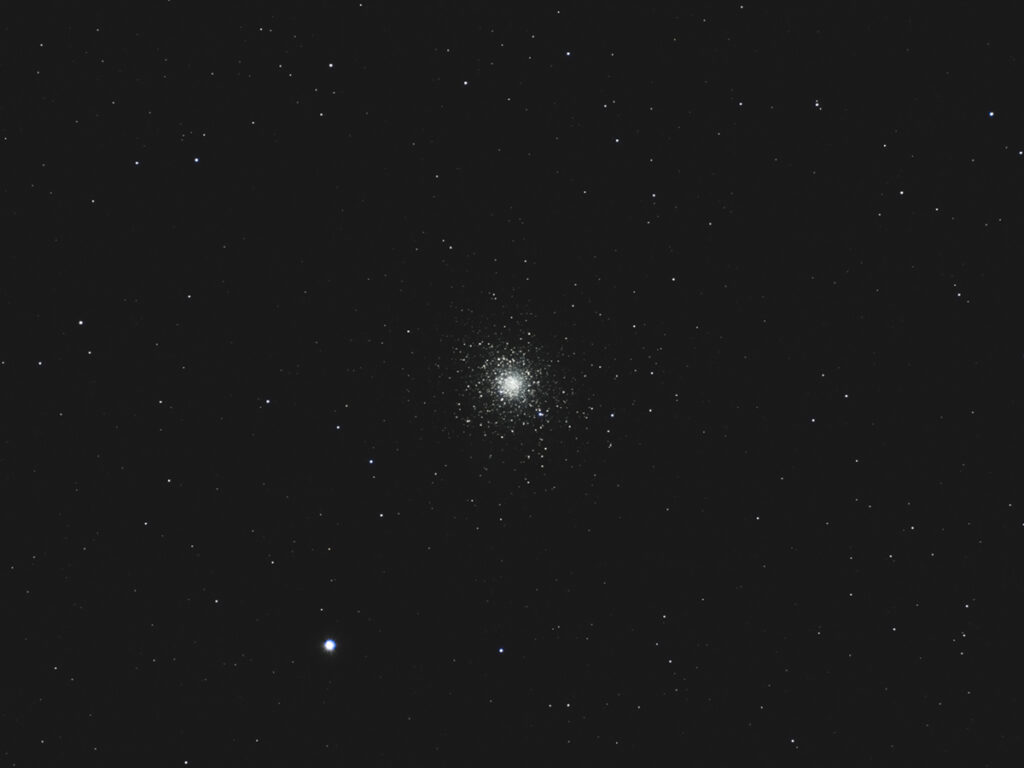
Telescope: Unitron 155 4” f/15 refractor, Atlas EQ-G
Camera: Canon EOS Ra full frame DSLR
Filter: 2” GSO IR Cut Filter
Guide scope: Orion 50mm Guidescope, ASI120MM, PHD, Dithered every 4 subs
Exposure: 28x120sec, ISO 800, saved as RAW
Darks: Internal (Long Exposure Noise Reduction)
Flats: 32×1/80s tee shirt flats taken at dusk
Average Light Pollution: Bortle 8, poor transparency, haze
Lensed Sky Quality Meter: 18.4 mag/arc-sec^2
Stacking: Mean with a 1-sigma clip
White Balance: Nebulosity Automatic
Software: Backyard EOS, Deepsky Stacker, Nebulosity, Photoshop
Like many globular clusters M5 is a relic of the early universe with an estimated age of 13 billion years. It is also one of the largest known globular clusters home to as many as 500,000 stars in a region 165 light years across. Its large size has been a major factor in its longevity. Globulars near the galactic plane slowly disperse as they lose stars to the Milky Way. However, M5 is so large that it has been able to hold on to most of its stars. At magnitude 5.7 M5 is an excellent target for small telescopes.
M5 currently rises in the east during the early evening and is visible for most of the nigth.
Recent Comments